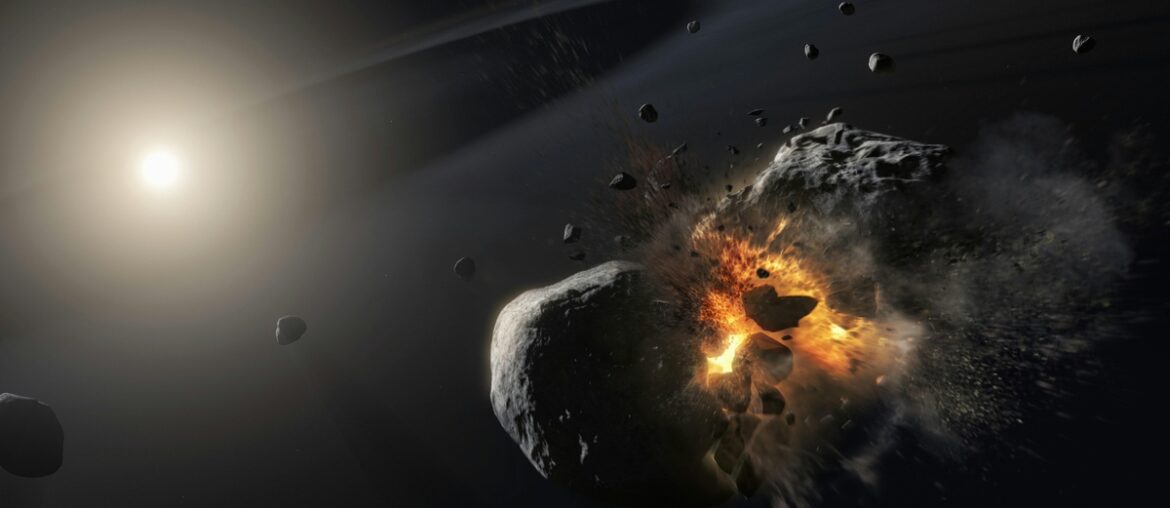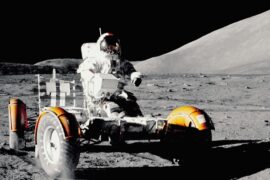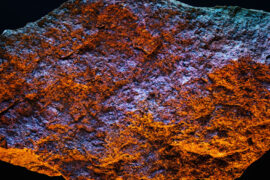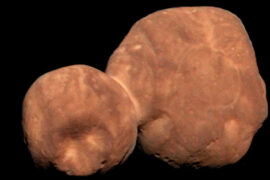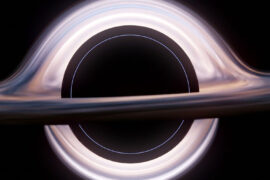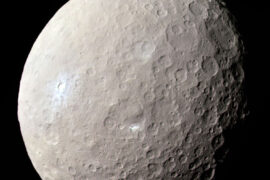On June 30, 1908, a 50–100 meter object exploded over Tunguska, Siberia, flattening roughly 2,000 square kilometers of forest — a reminder that cosmic hazards are not merely theoretical. The Tunguska blast is one striking example of the deadliest events from space and why even relatively small near-Earth objects deserve attention. Sixty-six million years ago the Chicxulub impact (caused by an object roughly 10–15 km across) is linked to a mass extinction that reshaped life on Earth. These events matter because they threaten human lives, critical infrastructure, and the global economy. From huge asteroid strikes to intense solar storms and cascading orbital debris, the next serious incident could kill thousands to millions or shut down systems we rely on daily. Below I walk through 10 specific, scientifically grounded threats grouped into three categories — planetary/impact hazards, solar/space weather threats, and near-Earth human-made/orbital threats — and explain what each would mean for people, cities, and nations.
Planetary and Impact Hazards

Planetary and impact hazards are among the deadliest events from space, ranging from city-level blasts to global catastrophes caused by large asteroids or comets. Historical precedents like the Chicxulub impact (≈66 million years ago) and Tunguska (1908) show how effects can be immediate and long-lasting. Impacts produce direct effects — blast, heat, shock waves — and indirect effects such as climate change from dust and aerosols.
1. Massive asteroid or comet impact
A large asteroid or comet impact is the textbook planetary catastrophe. The Chicxulub impactor, roughly 10–15 km across about 66 million years ago, injected vast amounts of dust and aerosols into the atmosphere and is strongly linked to the end-Cretaceous mass extinction.
A similar object striking today would produce global-scale effects: a massive blast at impact, searing heat over wide areas, and enough dust and sulfate aerosols to reduce sunlight for years. Climate models show global average temperatures could drop by several degrees Celsius for multiple years after a Chicxulub-scale strike, collapsing yields across staple crops and threatening food supplies worldwide.
NASA and the USGS support surveys and impact modeling because decades of advance warning matter. Current programs under NASA’s Planetary Defense Coordination Office and ground surveys have mapped many of the biggest near-Earth objects, but detection remains the first line of defense. For more on detection and response, see asteroid impact risks.
2. Regional ‘city-killer’ asteroid airburst
A ‘city-killer’ is an airburst from an object tens to a few hundred meters across. These objects release enormous blast energy in the atmosphere without necessarily creating a crater, but they can level urban areas.
The Chelyabinsk meteor (February 15, 2013) was roughly a 20-meter object that exploded over Russia, injuring about 1,500 people — mostly from broken glass — and shattering thousands of windows. Tunguska in 1908 is the larger historical comparison: an airburst that flattened about 2,000 square kilometers of forest.
Expected impacts on a modern city include:
- Blast overpressures that shatter windows and damage buildings.
- Secondary fires from broken gas lines and electrical shorts.
- Infrastructure loss — power, communications, and transportation disrupted for days to weeks.
Objects as small as 50 meters can be catastrophic regionally, which is why improved detection of sub-200 meter objects is a priority for planetary defense and civil protection planning.
3. Ocean impact triggering a mega-tsunami
An oceanic impact would displace enormous volumes of water and could generate tsunamis with trans-oceanic reach. The mechanism is simple physics: an impactor transfers energy to the sea, creating waves that radiate outward and grow when they reach shallow coastal shelves.
We have at least one dramatic real-world scale example of fast-moving water: the 1958 Lituya Bay landslide tsunami reached 524 meters locally, showing that water can move astonishing heights and energies when displaced suddenly.
For a large ocean strike, local wave heights near the impact could be hundreds of meters, while basin-wide waves could inundate coastlines thousands of kilometers away. Many coastal megacities — with dense populations and vital ports — would be at extreme risk. Tsunami modeling gives lead times for some basins, but early-warning systems and evacuations become much harder with little advance notice for directly impacted shores.
4. Long-term climate collapse (impact winter) following a large strike
Large impacts inject dust, soot, and sulfate aerosols into the stratosphere where they can linger for years and block sunlight. The result is a multi-year period of reduced solar radiation, commonly called an impact winter.
Climate simulations of Chicxulub-scale events show substantial drops in surface temperatures and sunlight, with consequences for photosynthesis and harvests. Even a few years of sharply reduced yields could exhaust global food reserves and trigger famines across multiple continents.
Secondary effects compound the problem: economic collapse from crop failures, breakdowns in supply chains, and the heightened risk of disease spread due to malnutrition and displacement. Research from universities and NASA-funded modeling informs emergency planners about yield declines and distribution priorities. Practical policy responses include national and international grain reserves, diversified food production, and coordinated global aid protocols to reduce mortality risk.
Solar and Space Weather Threats

Space weather — flares, coronal mass ejections (CMEs), and energetic particle events — can represent some of the deadliest events from space by crippling infrastructure and exposing people to harmful radiation. The Sun routinely throws out energetic storms that interact with Earth’s magnetic field and atmosphere, and our modern, connected systems make us more vulnerable than telegraph operators in the 19th century.
5. Carrington-level solar storm causing global blackouts
The Carrington Event (September 1859) is the benchmark: telegraph systems worldwide failed, some operators received shocks, and auroras were visible near the equator. That was a world with no electric grid as we know it; today’s grids are far more extensive and interconnected.
Modern assessments suggest a Carrington-level geomagnetic storm could damage high-voltage transformers and grid infrastructure, leading to months-to-years of outages in affected regions. The White House Office of Science and Technology Policy and other studies estimate a severe event could impose $1–2 trillion in economic losses in the U.S. alone, with recovery times measured in years if many transformers need replacement.
Mitigations include hardening grid transformers, stockpiling spare parts, improving space-weather forecasting, and operational plans to temporarily reconfigure grids during severe storms. The July 2012 CME that missed Earth by about nine days showed that near-misses happen and that forecasting windows matter for defensive actions.
6. Solar proton events that endanger astronauts and airline crews
Solar Proton Events (SPEs) shower spacecraft and high-altitude aircraft with high-energy charged particles. These particles penetrate shielding and deliver ionizing radiation doses to humans.
The 1972 solar storm occurred between Apollo missions and would have exposed astronauts on a lunar surface excursion to potentially lethal doses. Radiation is measured in sieverts; acute exposures above about 1 sievert significantly increase immediate health risks and raise long-term cancer risk. A strong SPE could put crewed lunar missions and future Mars expeditions at serious risk without effective shelter or added shielding.
On Earth, high-latitude and polar flights see elevated exposure during SPEs, and airlines sometimes reroute flights to lower latitudes to reduce dose. NASA and NOAA maintain radiation-monitoring programs, and Artemis-era mission planning includes improved sheltering strategies and shielding design to protect astronauts on the Moon and en route to deep space.
7. Coronal mass ejections disrupting satellites, communications, and GPS
Coronal mass ejections are massive expulsions of plasma and magnetic field from the Sun that can reach speeds up to about 3,000 km/s in extreme cases. When a fast CME hits Earth’s magnetosphere, it can drive geomagnetic storms that damage satellites and alter the upper atmosphere.
Effects range from single-satellite anomalies to whole-constellation degradations. Increased atmospheric drag during storms can change low-Earth-orbit satellites’ trajectories and cause premature reentry. The GPS constellation currently has about 31 active satellites, and timing or positioning errors ripple into navigation, shipping, and financial systems that rely on precise time stamps.
Mitigations include radiation-hardened satellite electronics, operational modes for storms, and redundant timing sources on the ground. Airlines and shipping firms can plan alternate navigation strategies, and maintaining backup timing — such as terrestrial atomic clocks — reduces single-point failures that cascade across industries.
Near-Earth Human-made and Orbital Threats

Human activity has turned low Earth orbit into a crowded environment where collisions and weapon tests create growing risks. Debris and deliberate interference threaten the satellites that underpin weather forecasting, communications, navigation, and emergency response — and when those systems fail, people on the ground can die.
8. Kessler syndrome — cascading space debris
Kessler syndrome is a feedback loop: collisions produce debris, which raises the chance of more collisions and still more debris, potentially making certain orbits unusable for decades. The concept is straightforward and frightening.
Since events like the 2007 Chinese anti-satellite test and the 2009 Iridium–Cosmos collision, debris counts and collision probabilities have increased. ESA and NASA currently track roughly 34,000 objects larger than 10 cm, while models estimate hundreds of thousands to millions of smaller fragments that are too small to track but big enough to disable satellites.
Consequences include higher risk for crewed missions, loss of commercial and government satellite services, and a long-term reduction in safe access to low Earth orbit. Mitigations range from improved debris tracking and collision-avoidance maneuvers to active debris removal and stronger international norms for on-orbit behavior. For more technical guidance, see Kessler syndrome and space debris.
9. Massive satellite failure disrupting critical infrastructure
A concentrated failure of navigation, communications, or Earth-observation satellites would ripple through many sectors. Satellites provide the timing signals used in telecom, finance, and power-grid synchronization; they supply imagery for disaster response; and they carry communications for remote regions and first responders.
GPS has about 31 active satellites, but many systems rely on multiple constellations (GPS, Galileo, GLONASS) for resilience. Simultaneous loss or degradation of several key satellites — from space weather, debris strikes, or deliberate attacks — could cause transport delays, errors in financial transaction timestamps, and difficulties in synchronizing power grids.
Mitigation steps include redundant multi-constellation GNSS receivers, hardened and distributed timing backends on the ground, and rapid replacement strategies for failed satellites. Industry moves toward resilient architectures and ground-based backups reduce single points of failure and save lives when seconds matter.
10. Space-based nuclear events or high-altitude detonations (and their fallout)
High-altitude nuclear detonations and some past anti-satellite tests have shown that nuclear explosions in space produce artificial radiation belts and long-lived hazards to satellites. Starfish Prime (July 9, 1962) is the canonical case: the test created radiation that damaged or disabled satellites across thousands of kilometers.
Today, a space-based nuclear event or a deliberate high-altitude detonation could create both immediate electromagnetic effects (EMP) and persistent charged-particle environments that degrade satellite electronics. The result: loss of communications, navigation, and Earth observation for extended periods. Artificial belts would be a hazard for any spacecraft passing through affected regions.
Diplomatic, legal, and technical measures are required to reduce this risk. Strengthening treaties, establishing norms against the weaponization of space, and designing satellites to tolerate higher radiation are practical steps that reduce the odds of such an event and limit downstream harm to people on Earth.
Summary
- Even relatively small objects can cause large human harm: Chelyabinsk (~20 m) injured about 1,500 people and damaged thousands of buildings, showing that sub-100 m objects are not trivial.
- Solar storms can be economically catastrophic: a Carrington-level event could cost roughly $1–2 trillion in the U.S. and take years to recover from without proper grid hardening.
- Orbital debris is a growing, human-made hazard: Kessler syndrome could make low Earth orbit largely unusable, threatening services billions rely on every day.
- Practical, actionable defenses exist: improved detection (NASA, USGS), better forecasting and hardening (NOAA, NASA), international debris mitigation (ESA and partners), and diplomatic norms reduce risk and speed recovery.
- Support monitoring programs, resilience planning, and international cooperation so we can detect threats early, protect infrastructure, and coordinate responses to the deadliest events from space.

